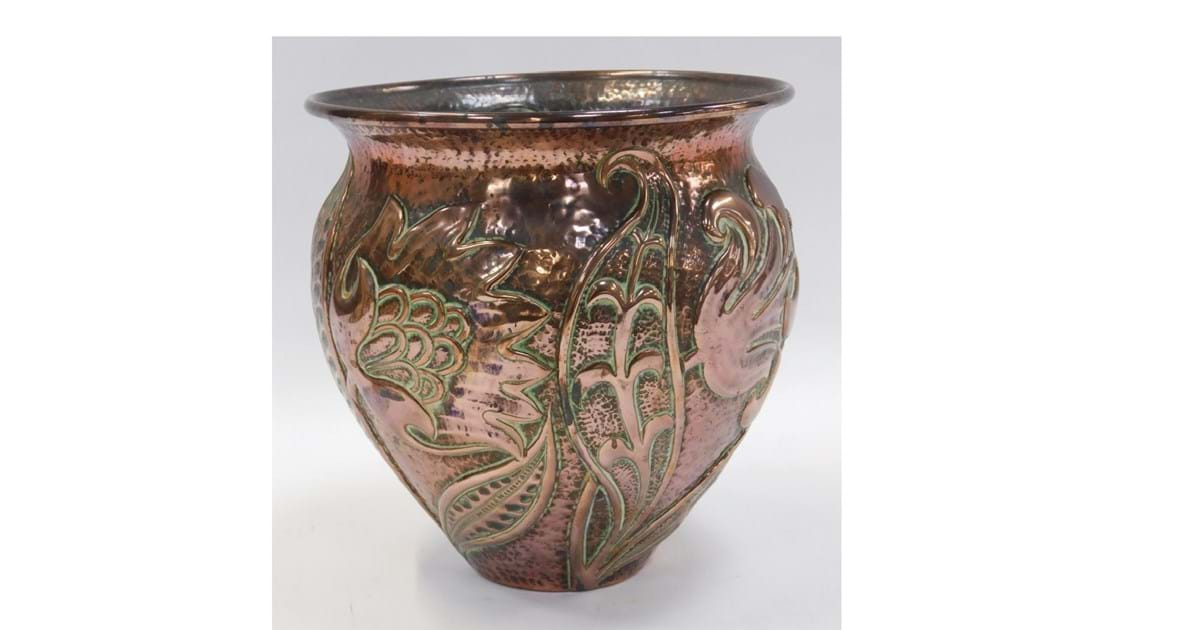An 1844 pattern officer's dress sabretache from the Leicestershire Yeomanry Cavalry, also known as Prince Albert's Own Regiment, is one of the highlights of the February sale at the Lincoln auction rooms.
The sabretache, which is a flat bag worn suspended from the belt of a cavalry soldier, is expected to sell for between £700 and £900 at the auction at Golding Young & Mawer on Wednesday, February 20.
Made by Hamburger and Co of Covent Garden, it is being sold with a matching cartridge pouch and crossbelt.
There is also a hallmarked silver Leicestershire Yeomanry Cavalry cartridge pouch dated 1910 which came from the same vendor and is expected to sell for between £300 and £400.
Auctioneer John Leatt said: "These items were consigned by a local collector and will be of great interest to collectors of militaria. The fact they come from a Yeomanry Regiment from the Leicestershire area makes them quite rare items and we expect a good deal of interest on sale day."
The sabretache was originally derived from a traditional Hungarian horseman's flat leather bag called a Tarsoly. Early examples have been found in tombs of the Magyar warriors from the 10th century Conquest of Pannonia.
In the early 18th century, the tarsoly was worn as part of the accoutrements of the hussar cavalry in Europe. The German name sabretache was adopted as 'tache' means pocket and the bags were used as pockets to hold orders and dispatches.
The sabretache was adopted by the light dragoon regiments of the British Army at the end of the 18th century and were still worn in combat during the Crimean War. By the turn of the 20th century, they had been abandoned for use in the field but were still worn by some regiments for ceremonial occasions.
In the same sale, a late 18th to early 19th century walking stick carved from a Narwhal tusk with a handle made from marine ivory and shaped like a clenched hand or fist is expected to attract the interest of collectors. This early example of scrimshaw, which would have been made by a sailor on board a whaling ship, is expected to sell for between £1,000 and £1,200. It is being sold by a private collector from Yorkshire.
There is also another walking stick made from a Narwhal tusk with a handle carved in the form of an angry-looking hound with glass eyes which is expected to sell for between £500 and £800. The Victorian walking stick was brought into the auction house by a vendor from the East Coast area of Lincolnshire.
The Narhwal is the legendary 'unicorn of the sea' and it is thought that Narwhal horns used in trade or washed up on beaches gave credence to the myth of the unicorn. The Narwhal, which live in Arctic waters, only have two teeth and in males the left tooth grows out of the jaw into a long spiralled tusk that can reach 2.5 metres in length.
Meanwhile, a cane walking stick with an ivory handle in the shape of a horse's hoof has an estimate of between £200 and £300, and a riding crop with a handle carved as a greyhound is expected to sell for between £100 and £150.
There is also the bill of a Sawfish which came from a private collector and is expected to sell for between £150 and £200.
In the furniture section, there is an 18th century sedan chair painted with various crests which is in need of extensive restoration and is expected to sell for between £800 and £1,200.
There is also a William IV rosewood library table with an estimate of £300 to £400, as well as three sets of six balloon back dining chairs, dining tables, sideboards, chests of drawers and display cabinets.
Among the clocks is a mid-18th century long case clock by James Howitt of Sunderland in a mahogany case which is expected to sell for between £1,000 and £1,500. There are also two other long case clocks and 10 mantel clocks.
In the bygones section is a set of three GNR cast iron railway bench supports which are reputed to have been removed from Lincoln Railway Station during its refurbishment and are expected to sell for between £100 and £200.
A group of approximately 10 photographic plates depicting scenes of Lincoln including Lincoln Cathedral and the Stonebow are expected to sell for between £20 and £30.
Within a healthy section of ceramics are over 20 items of Moorcroft pottery which were brought into one of the auction house's free valuation days at Kenwick Park, Louth. There are also a further 20 items of studio pottery, art glass, Bohemian glass, Lladro and Liberty Pewter.

